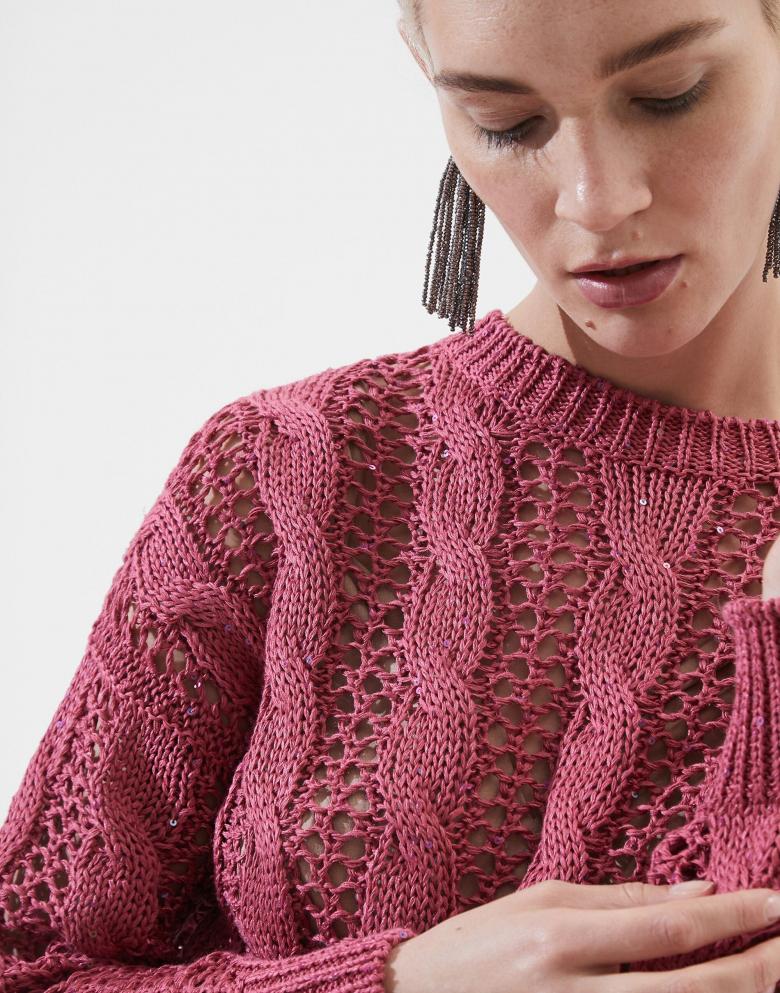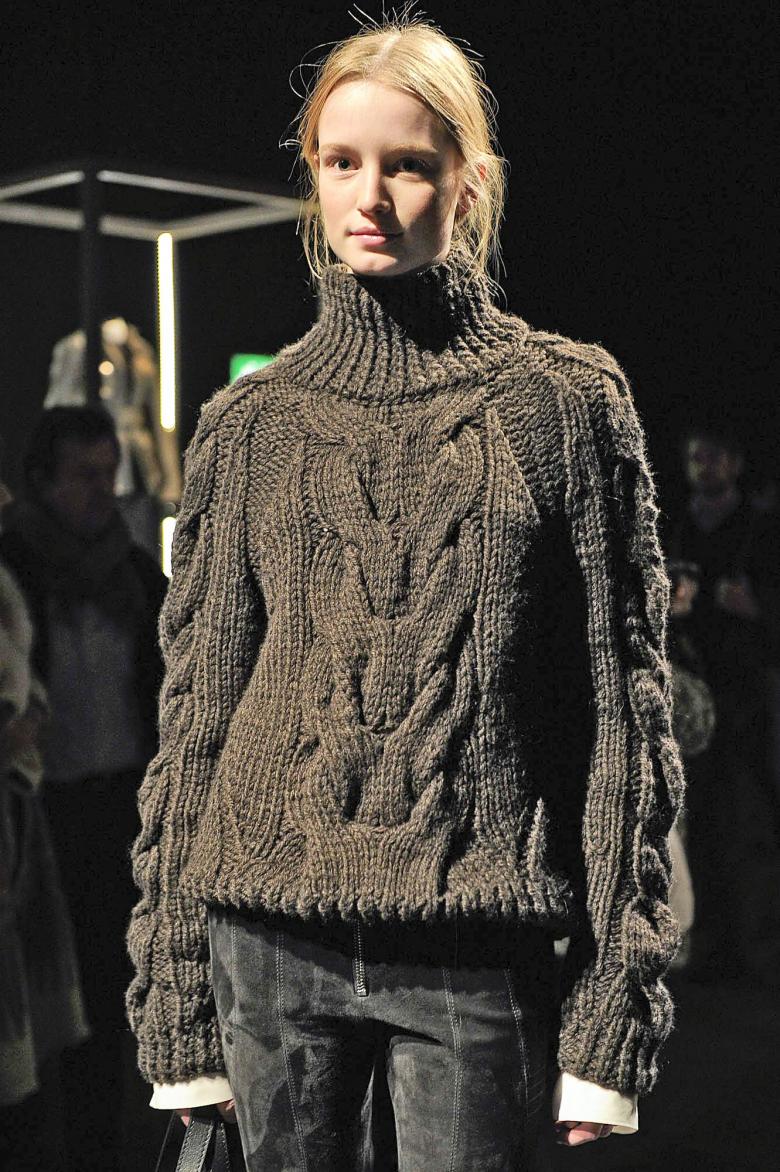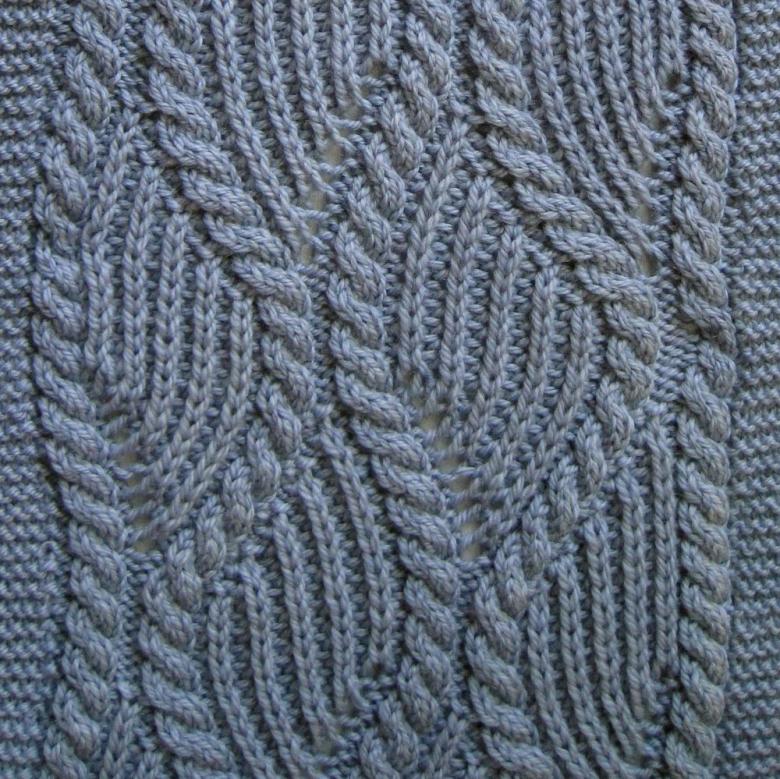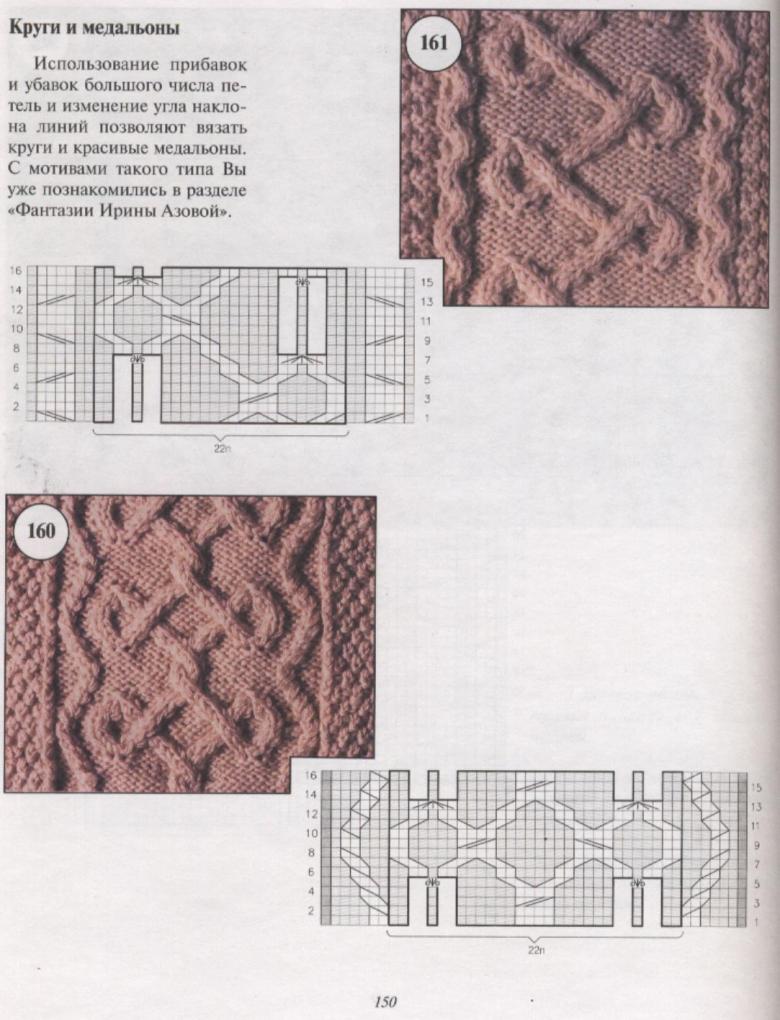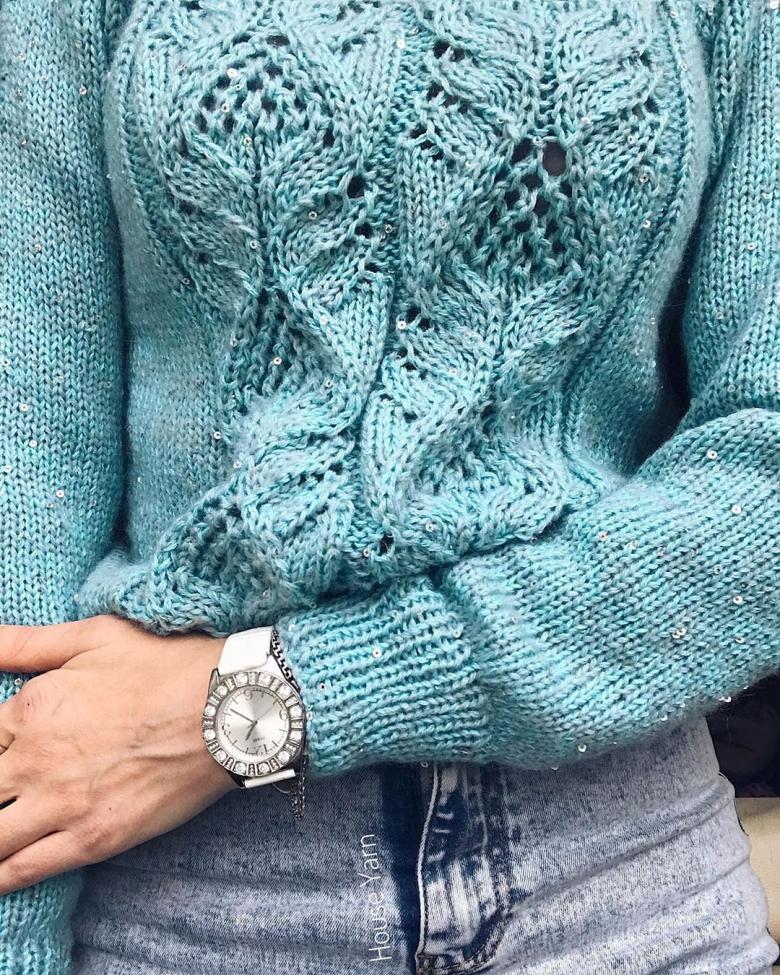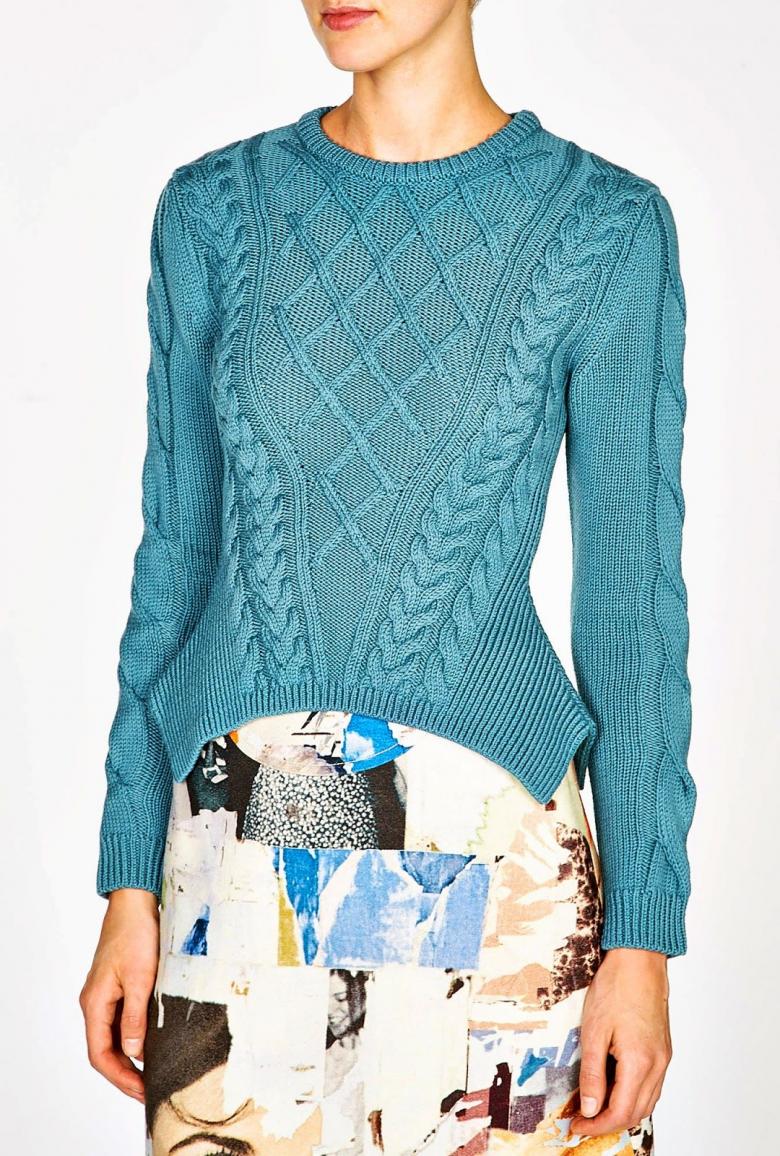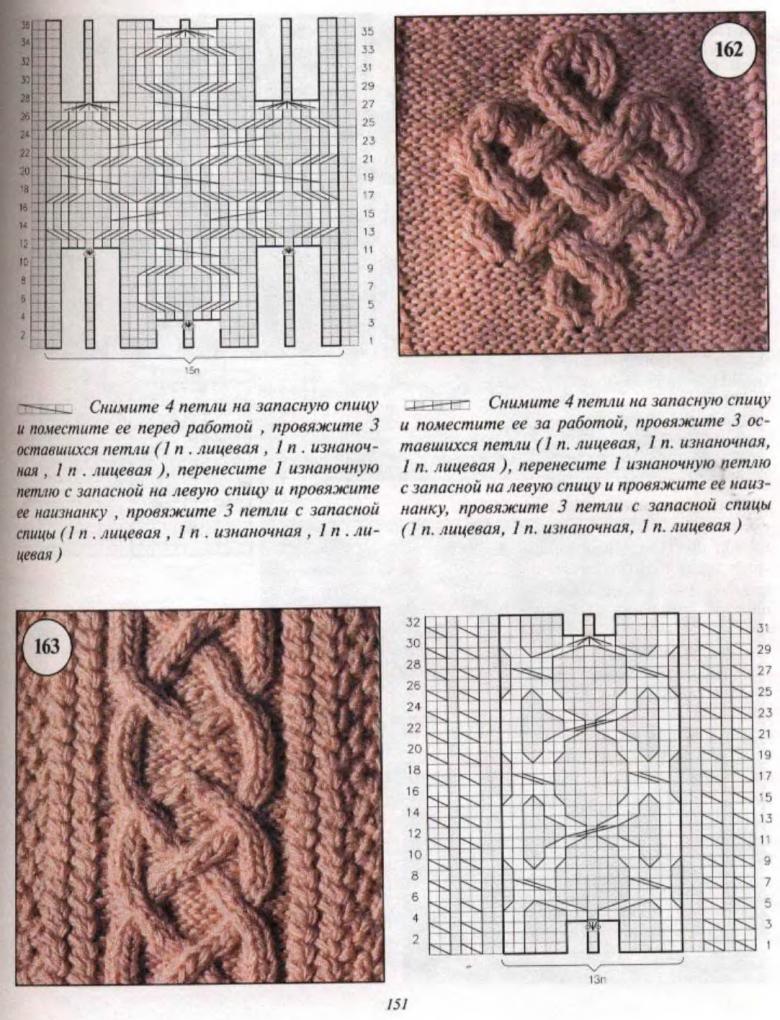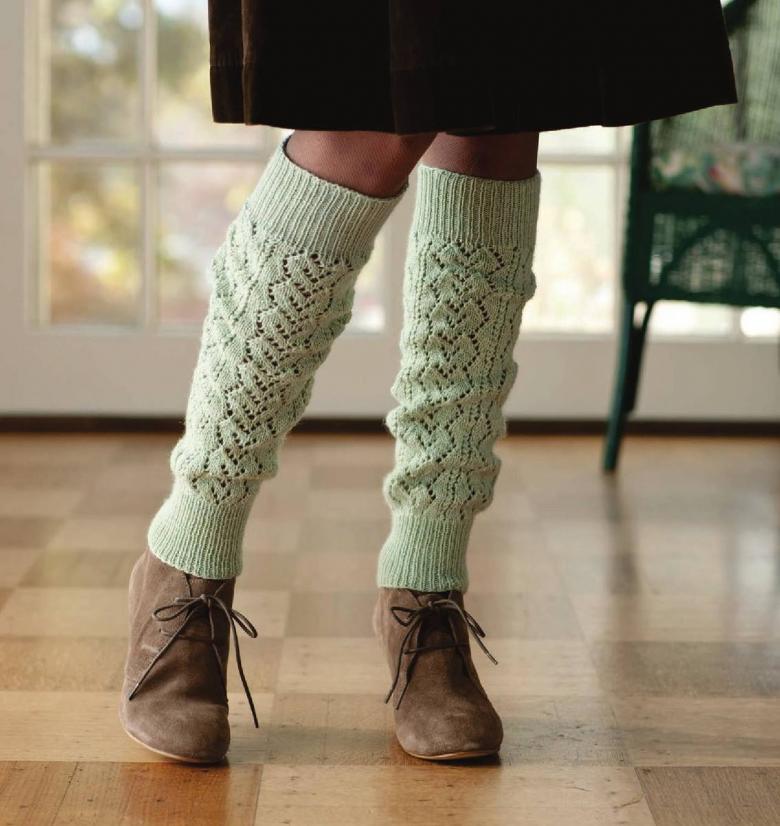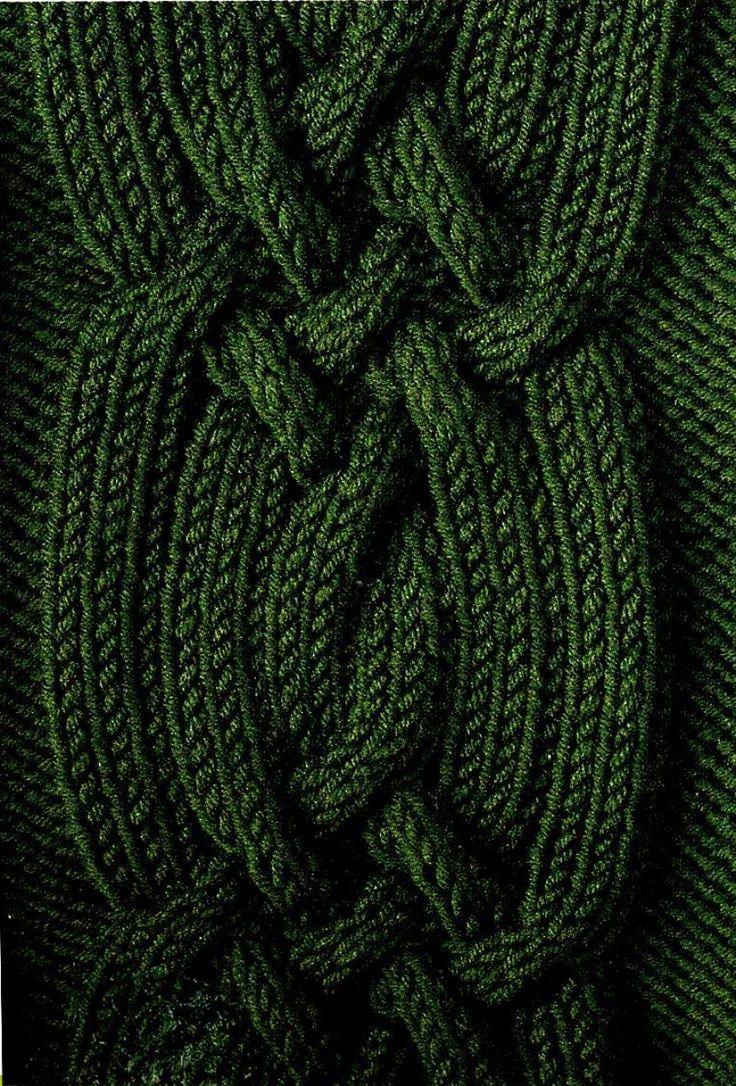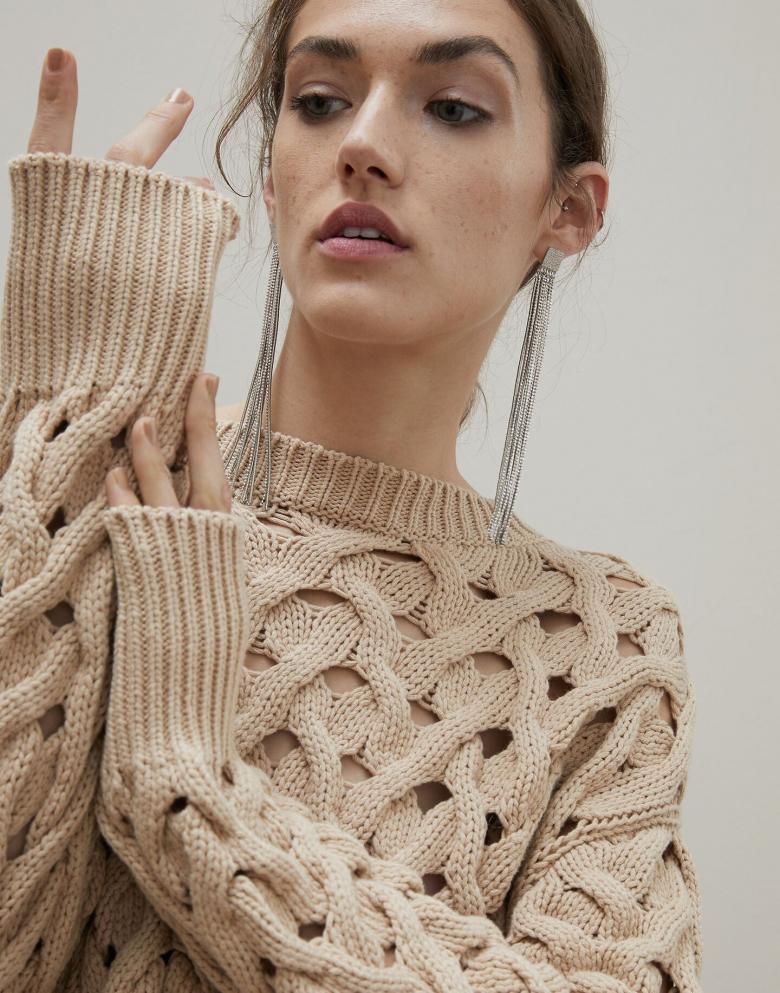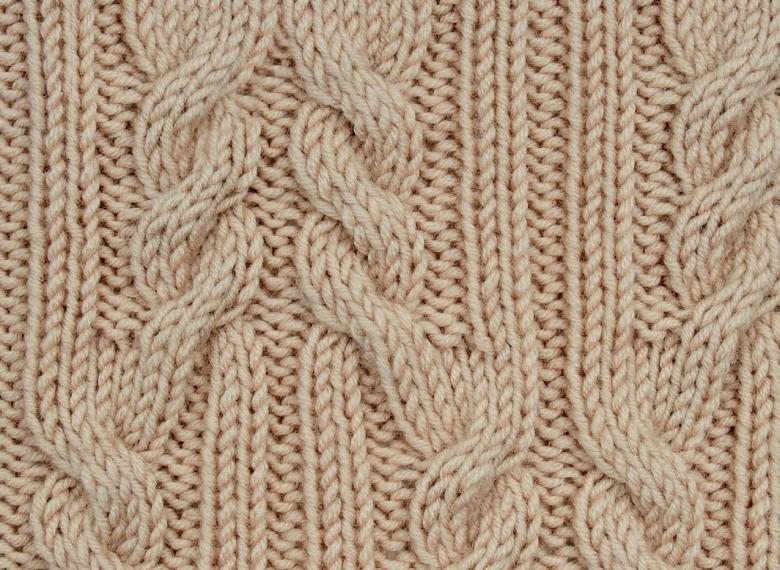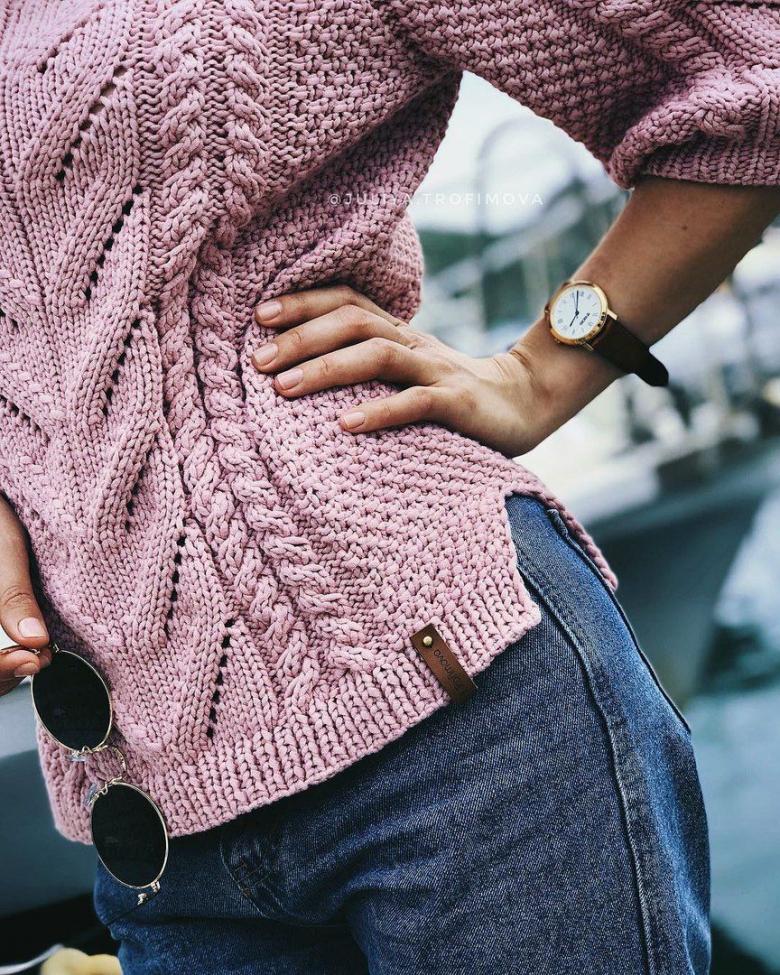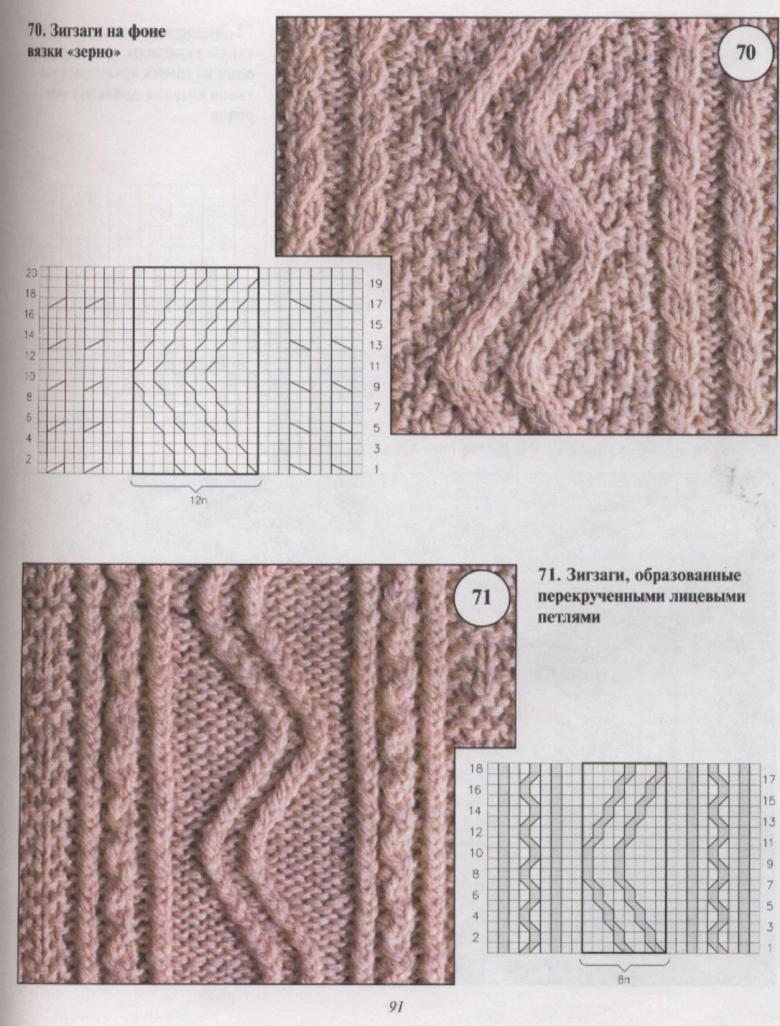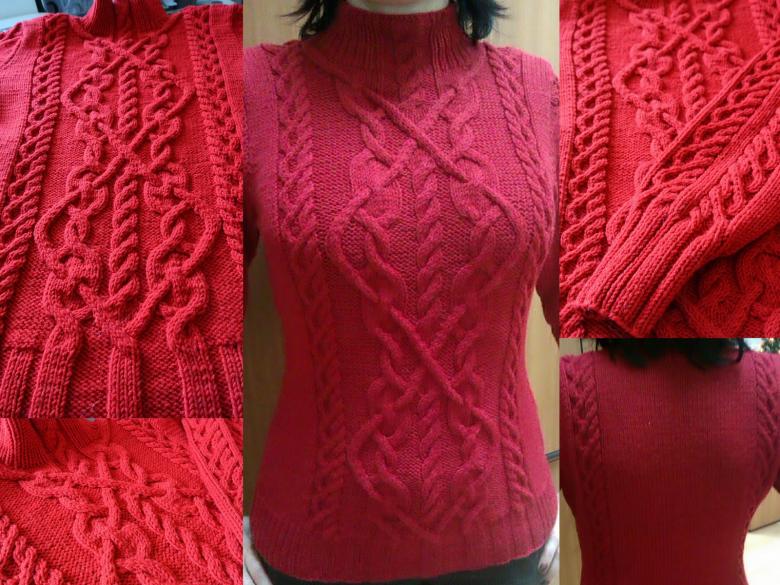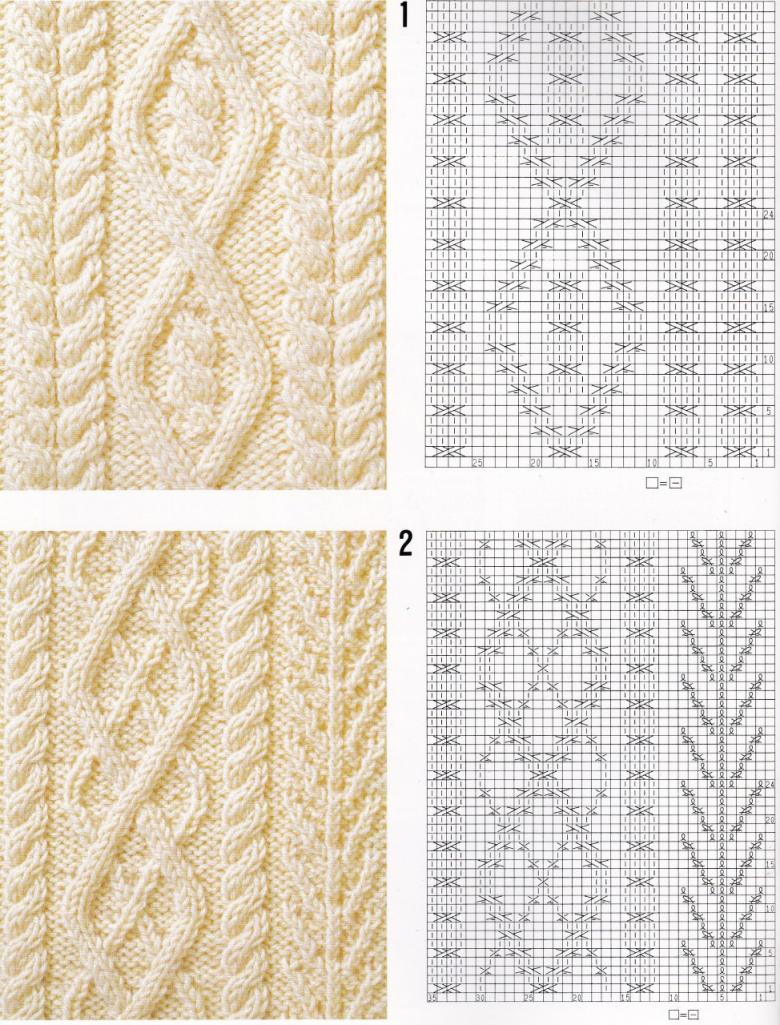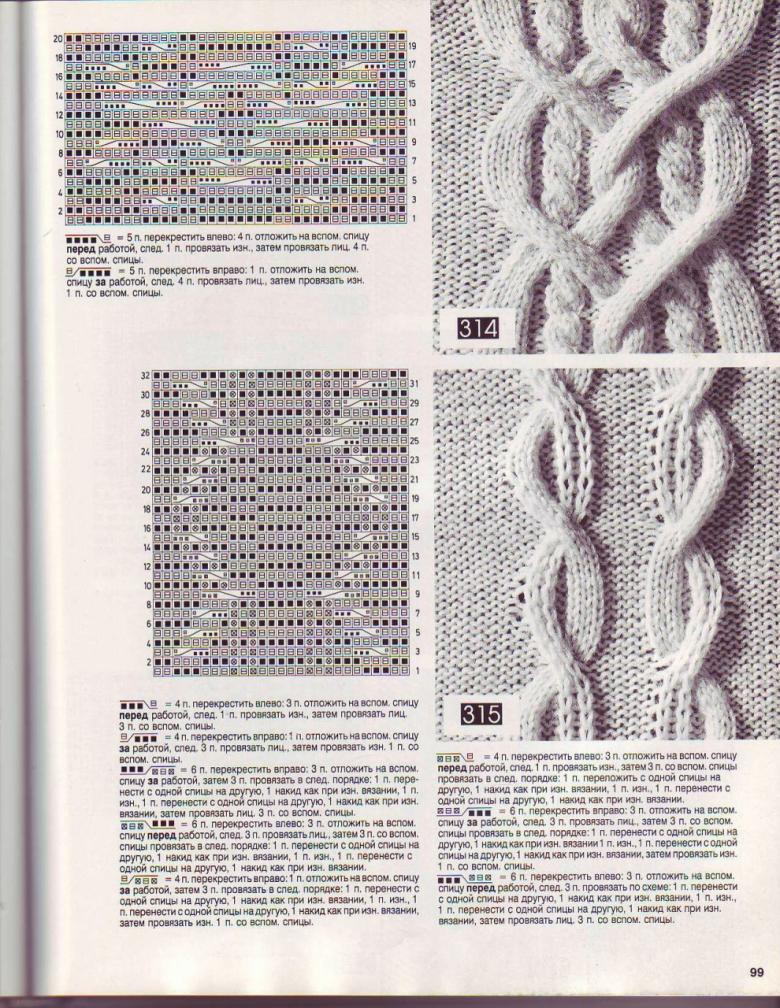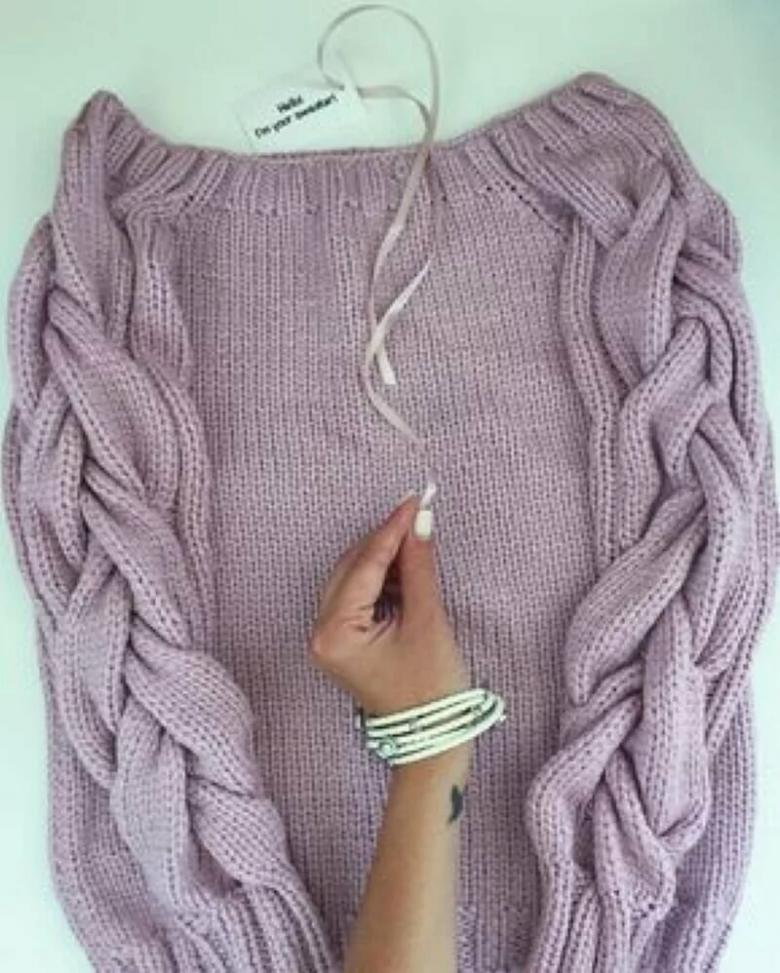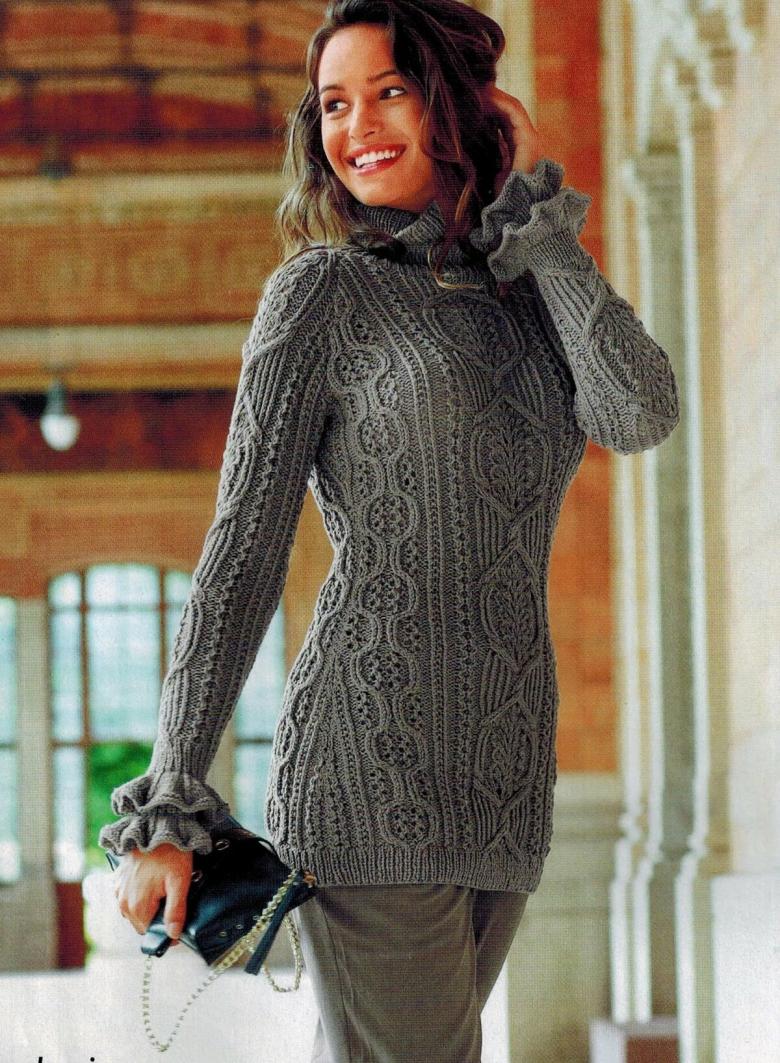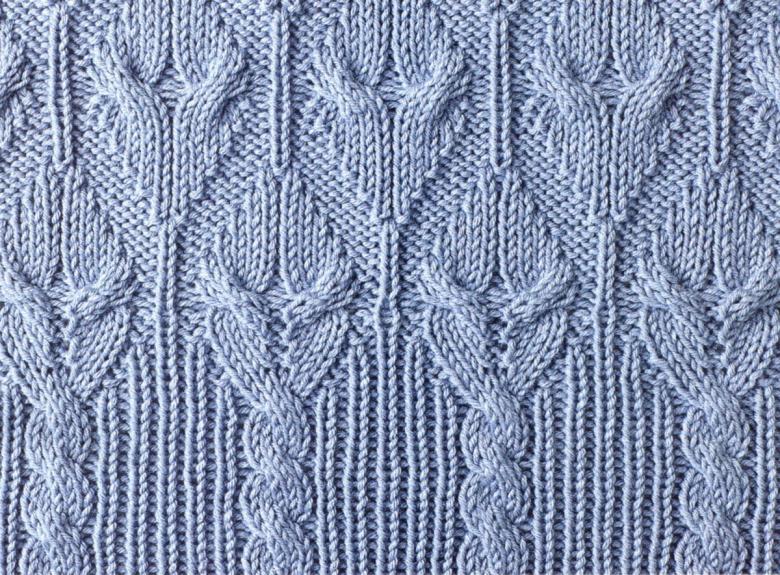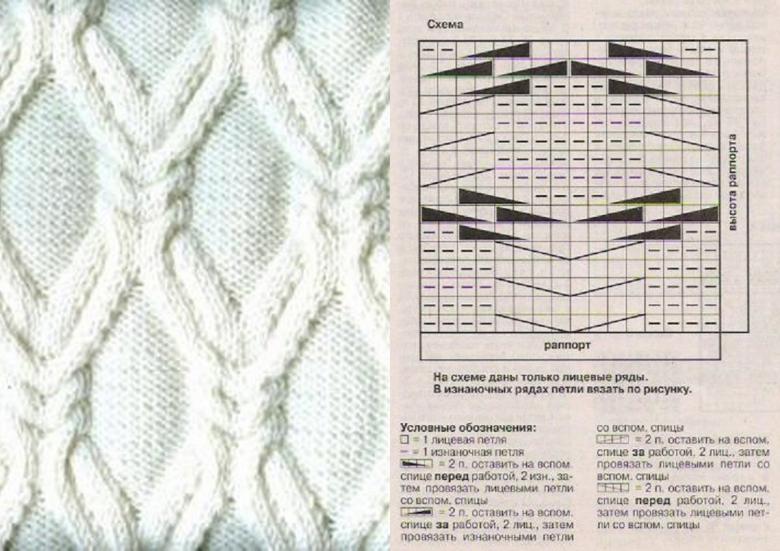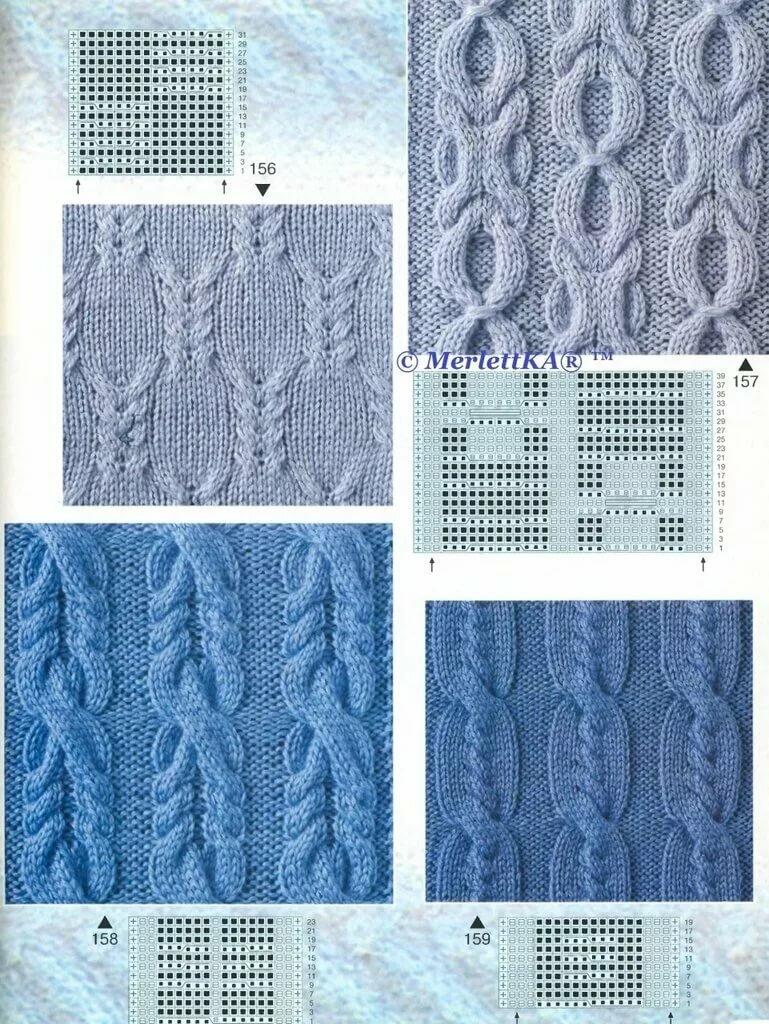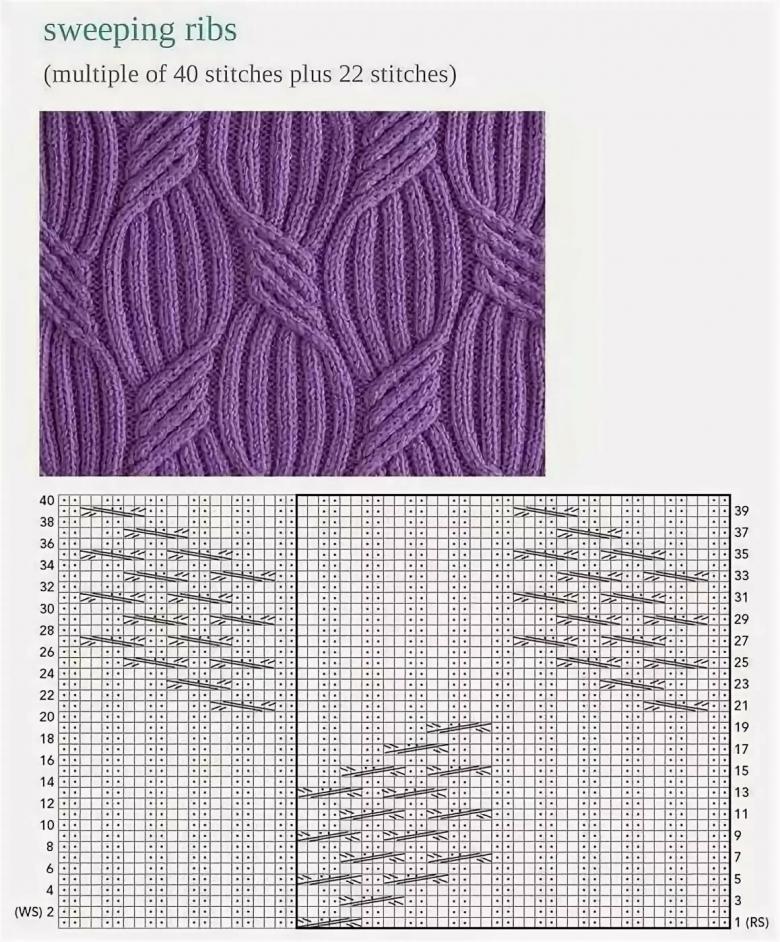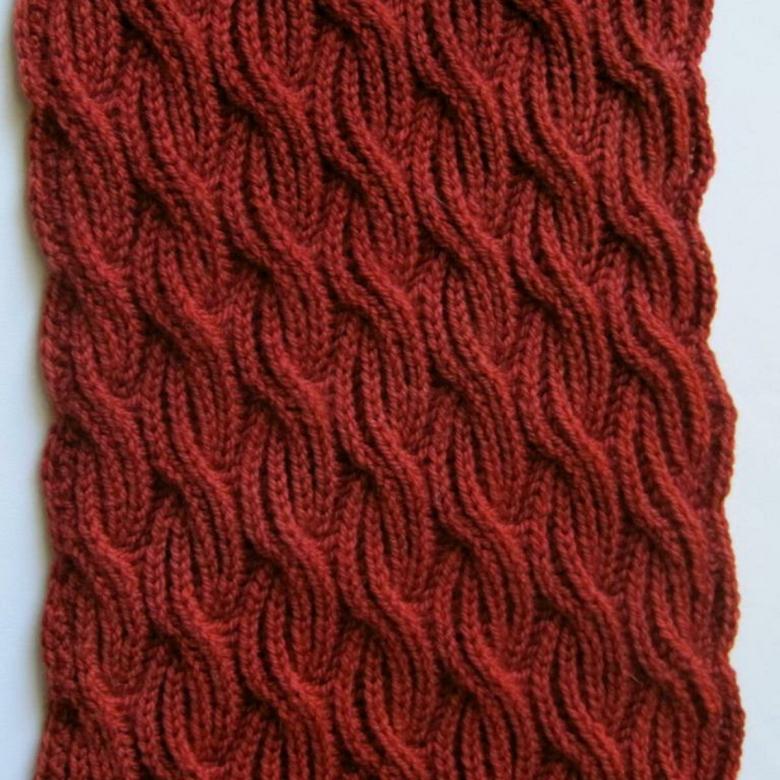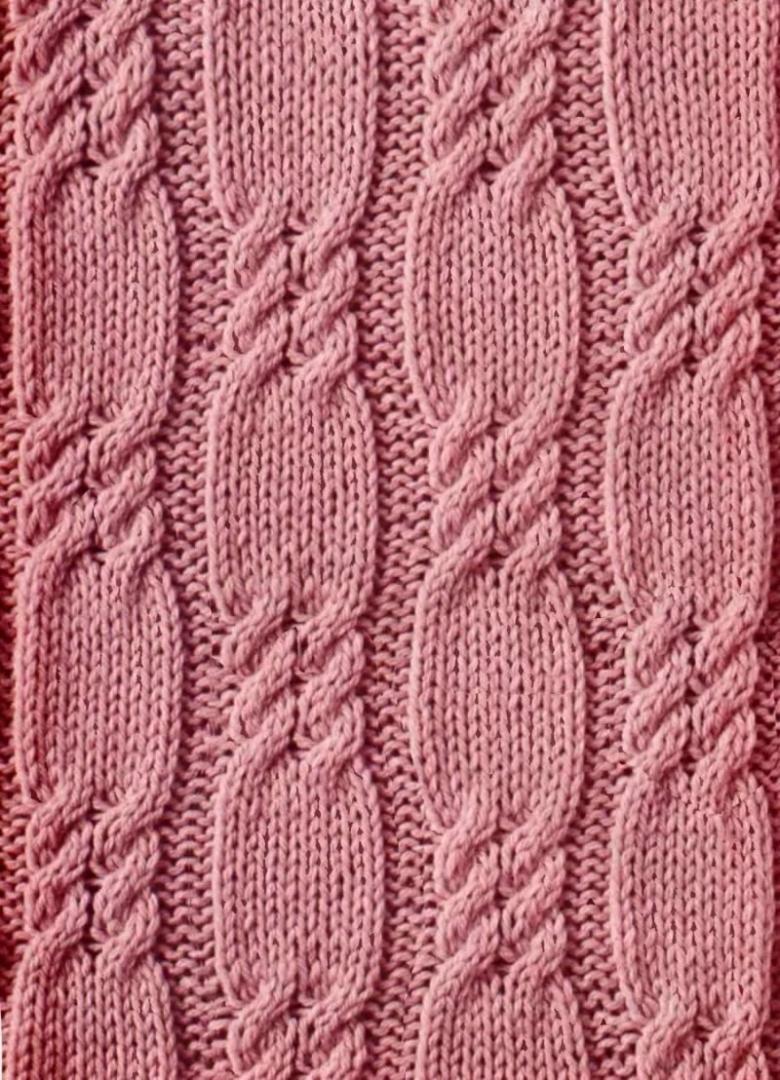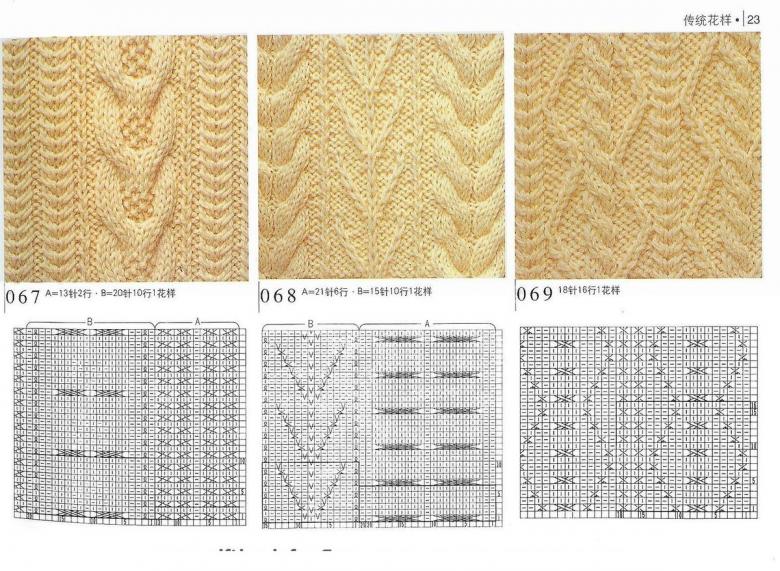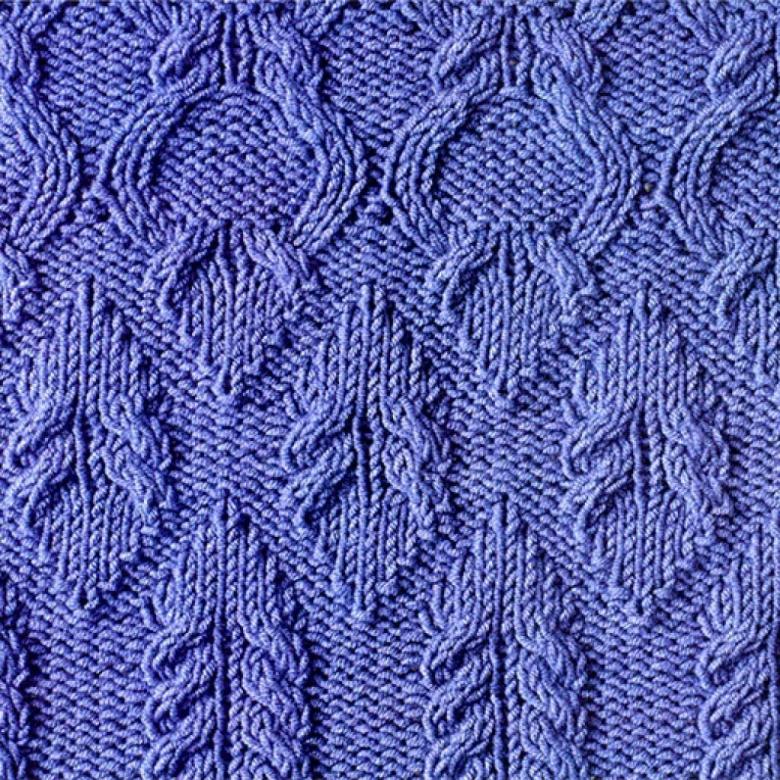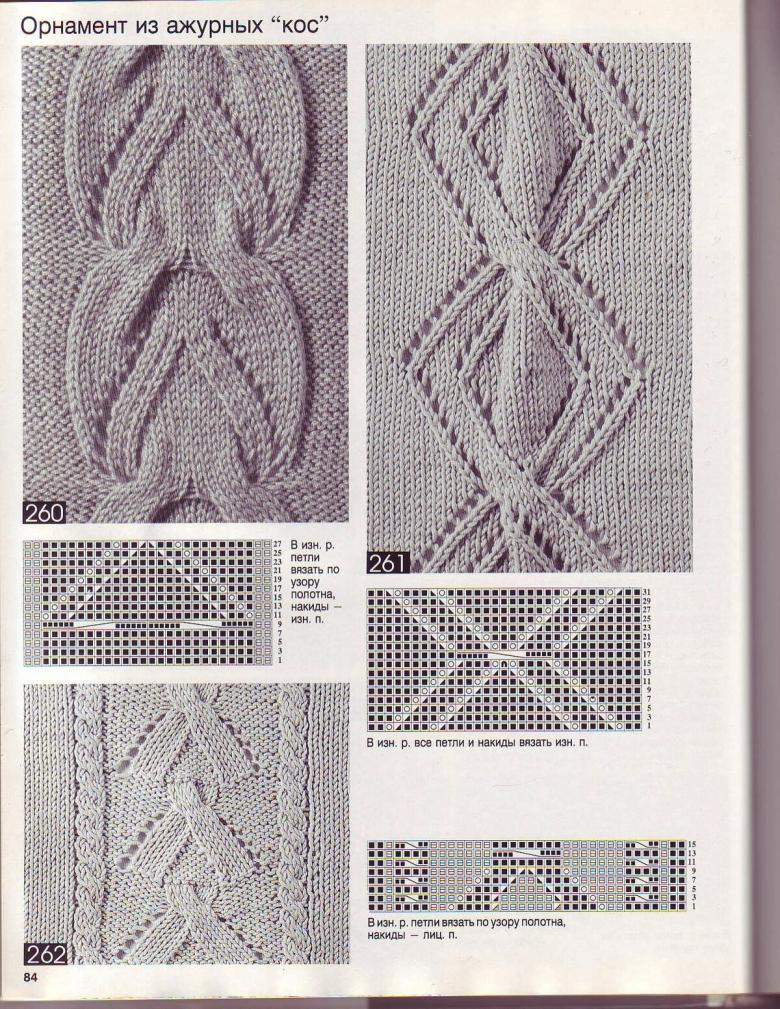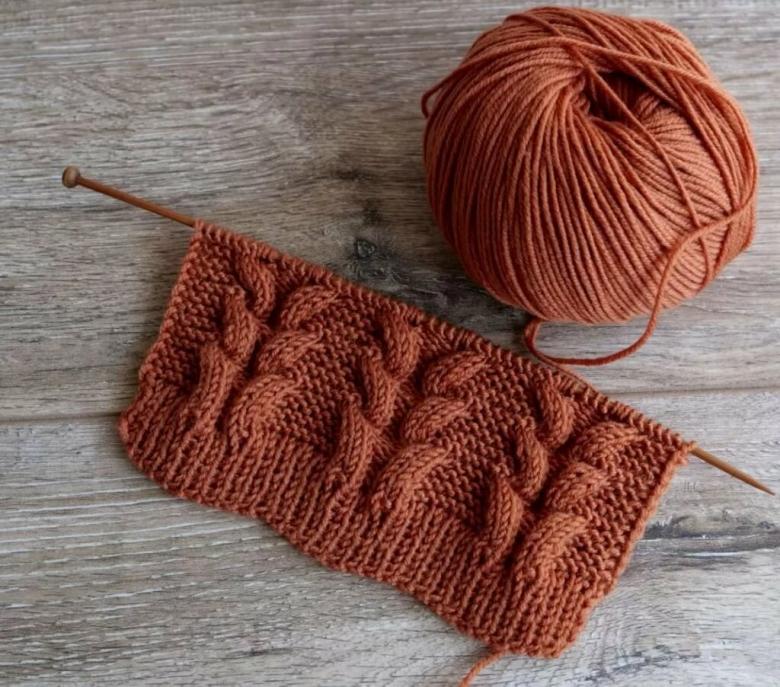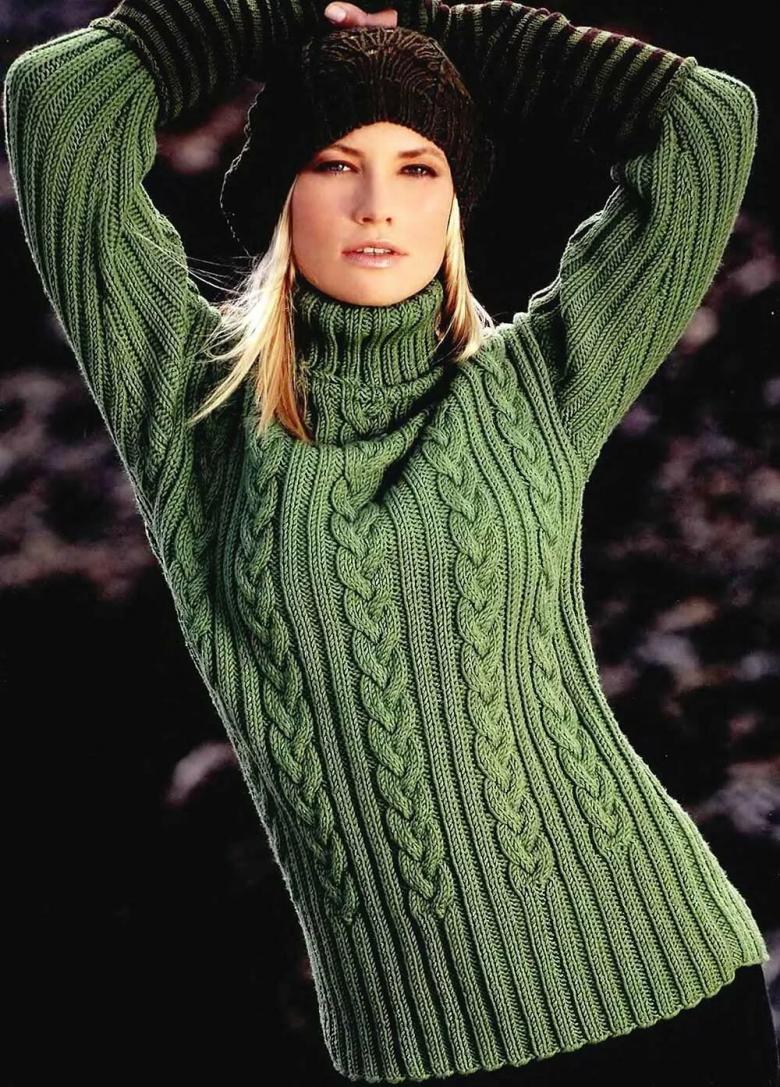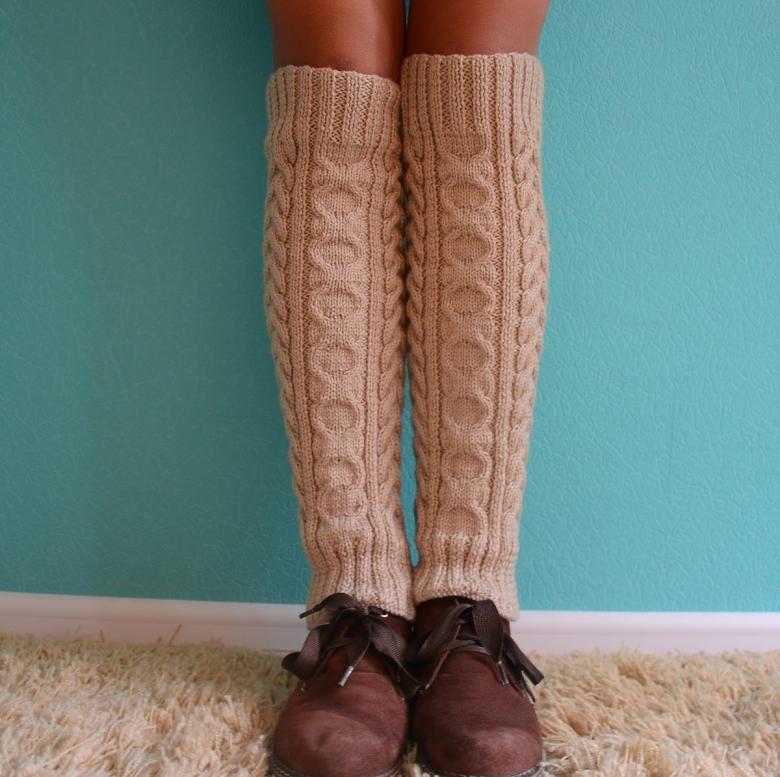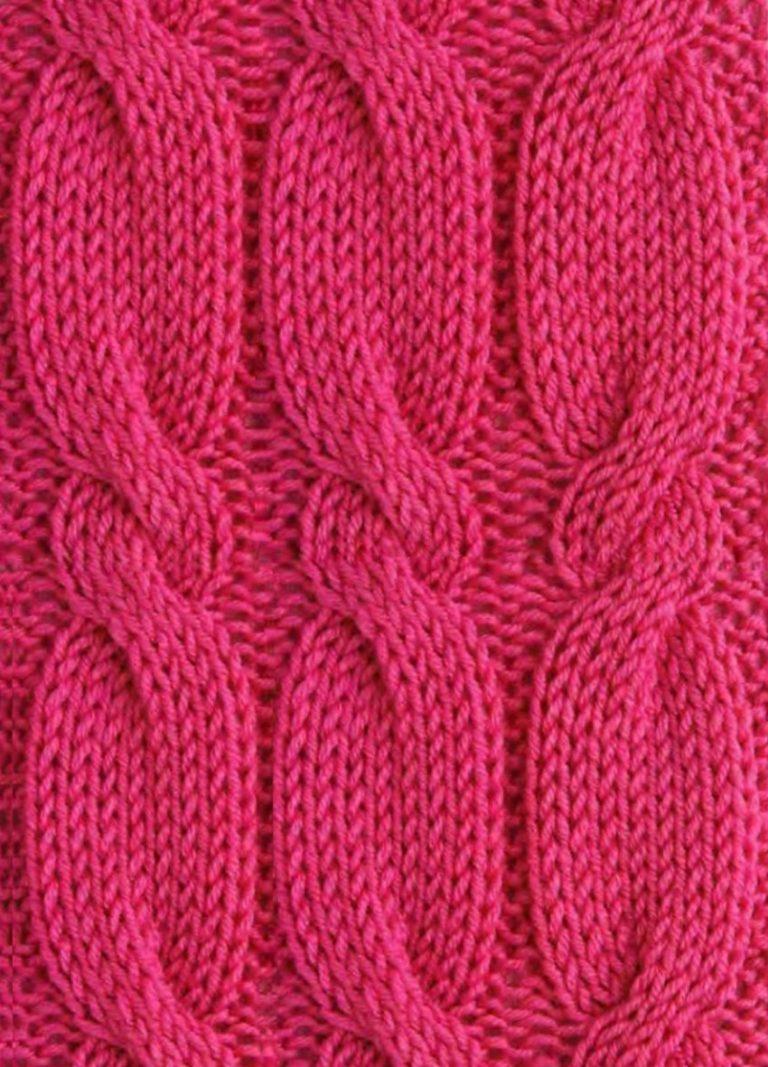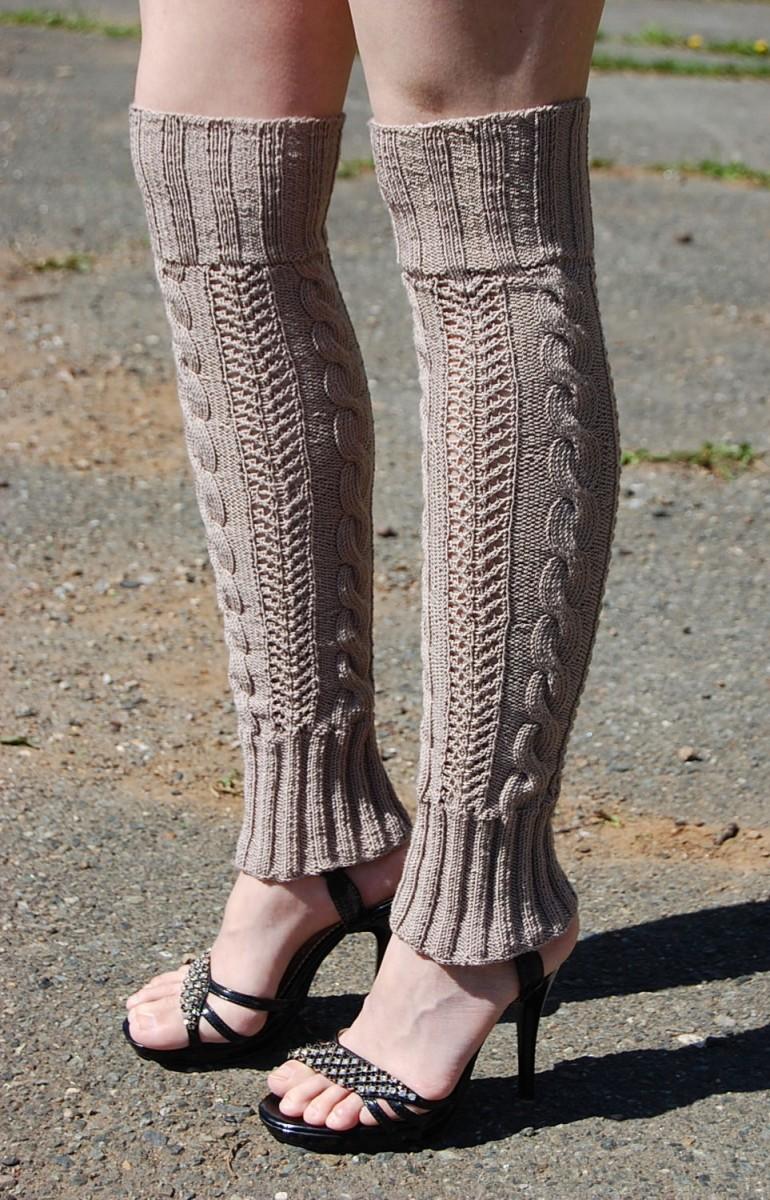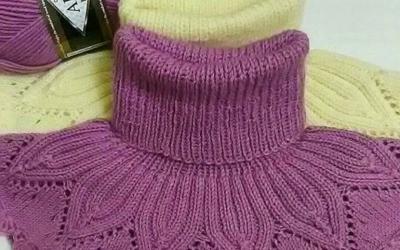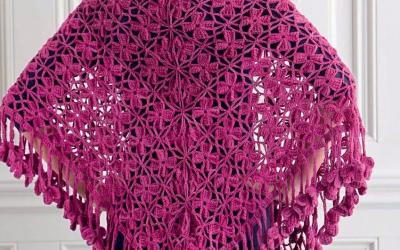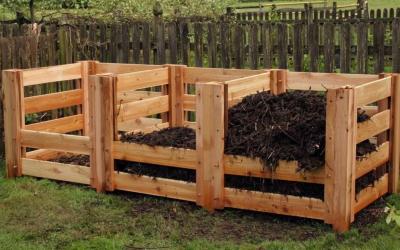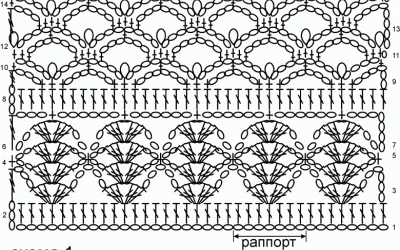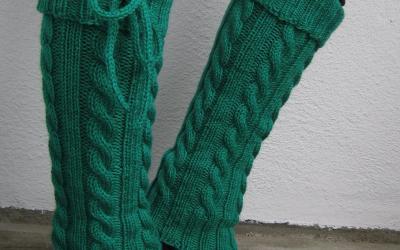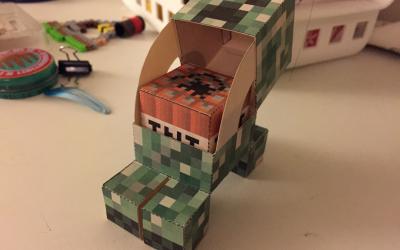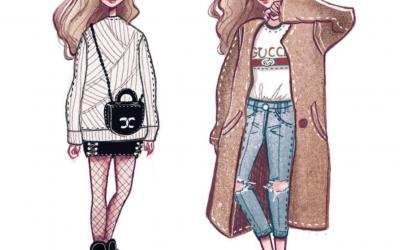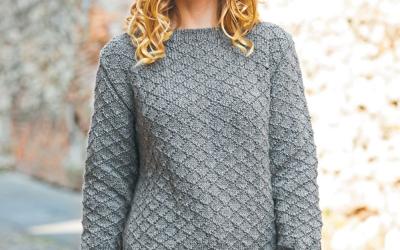Knitting harnesses by needlework and crochet: photo examples of how to do it with your own hands
Products made in the Irish knitting technique are always unique and remain a difficult kind of needlework, which the knitting machine will not be able to handle.

Ancient knitting technique
This method of needlework appeared in the West of Ireland and is called, after the place of origin, Aran knitting. Local craftswomen used ancient Celtic motifs of braid weaves to make warm sweaters for sailors and warriors.
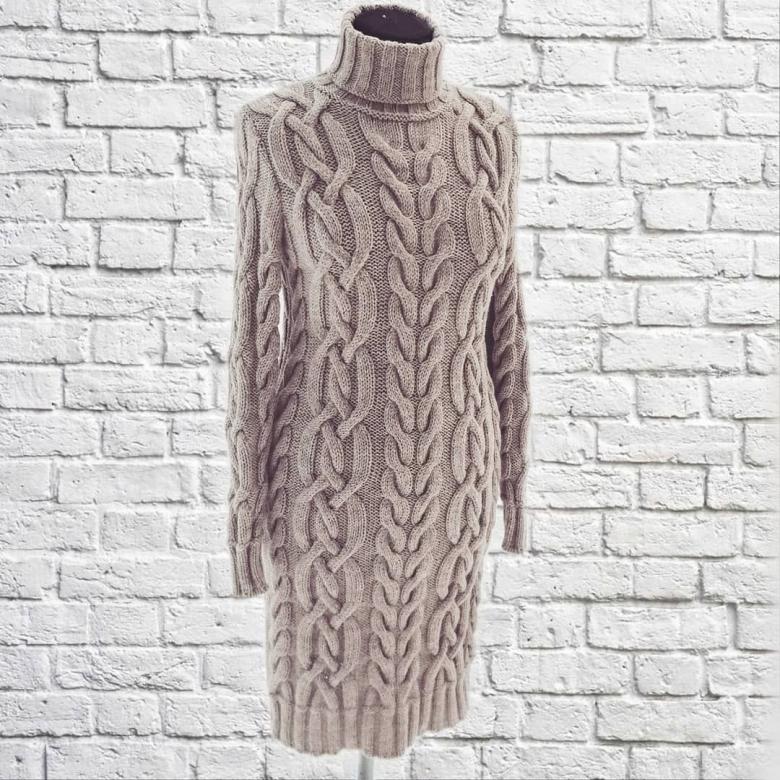
Then the popular and beautiful patterns spread everywhere and now they remain a favorite and sought-after theme in home knitting sweaters, hats, scarves, leggings, socks, mittens and interior items such as napkins, capes, bedspreads and plaids.
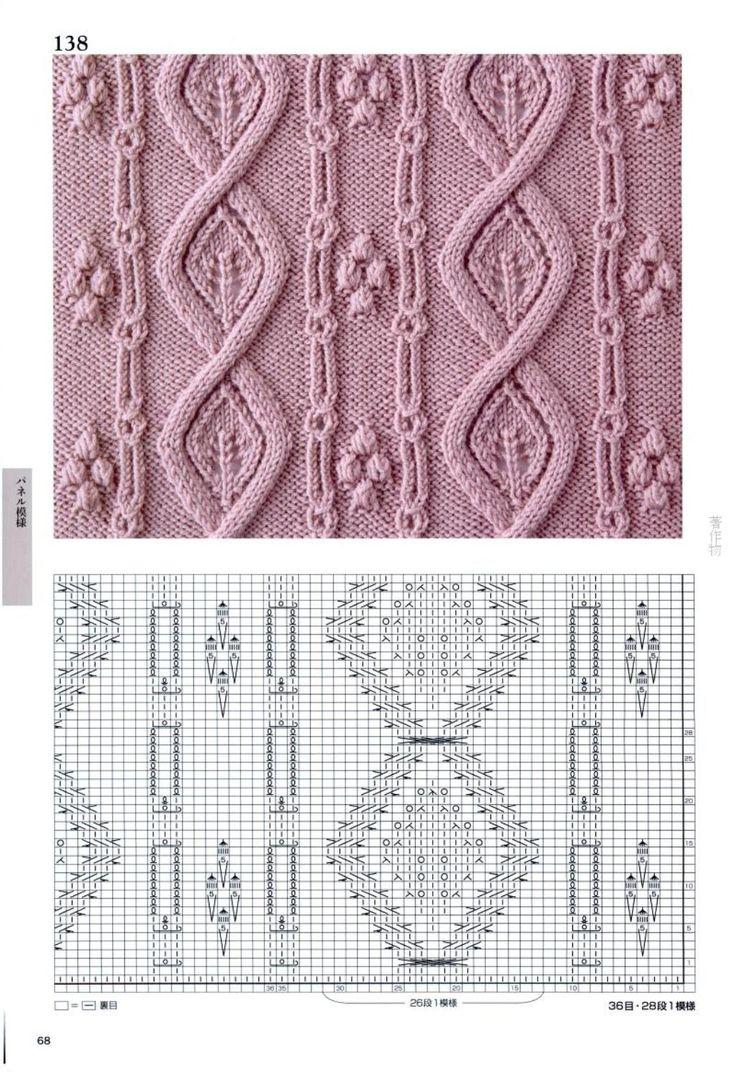
How to get started with knitting
For beginners in this section of needlework, the simpler patterns will be suitable for mastering the technique, so that it is easier to understand them and learn the basics of aran knitting. Later, you can proceed to more complex and beautiful patterns, which experienced craftsmen can create by improvising in the course of the work.

The whole complex pattern of a large knitted piece consists of individual fragments of braids and harnesses. The braids are single overlaps of two or more loops, with the help of spokes, while the harnesses are made up of a whole pattern of these overlaps, which are made with both spokes and crochet, and are folded into a large whole pattern. The similarity and methods of doing these techniques allow you to combine them into one type of pattern.
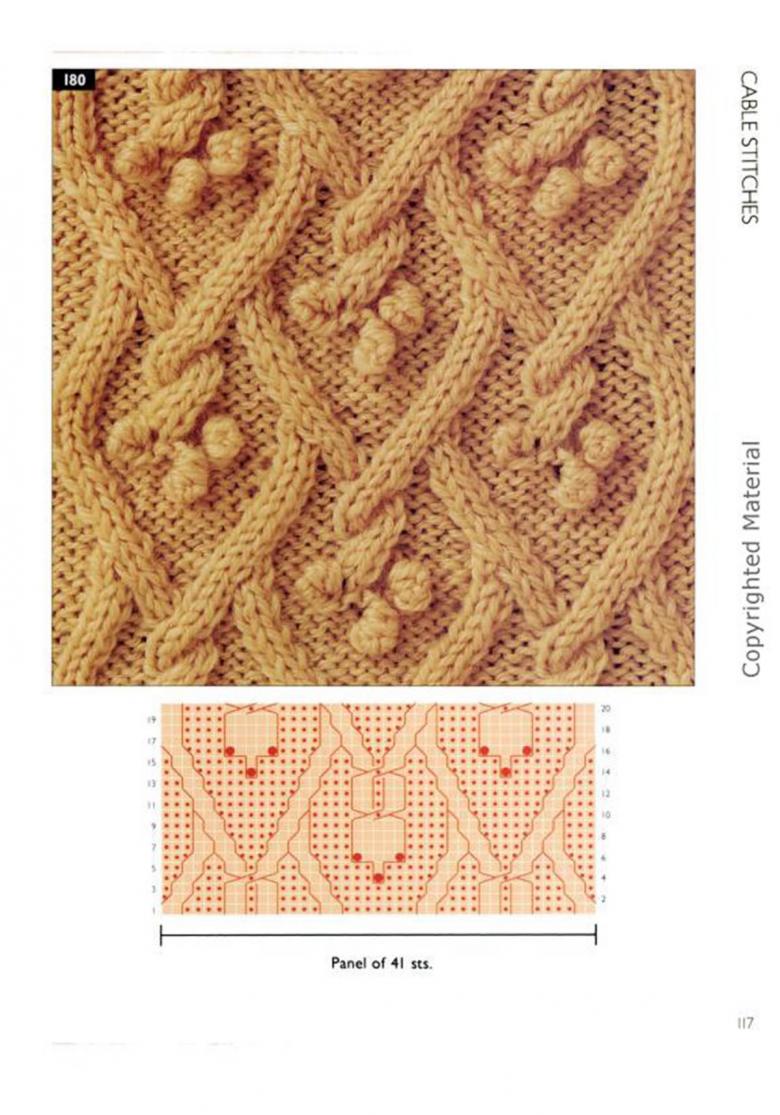
Knitting braids
For the work you need an extra third needle or a large pin to take off a few loops for crossing. Moving the loops should be done according to the pattern: to the right or to the left. For symmetrical patterns, the crossings are made in the mirror image order.
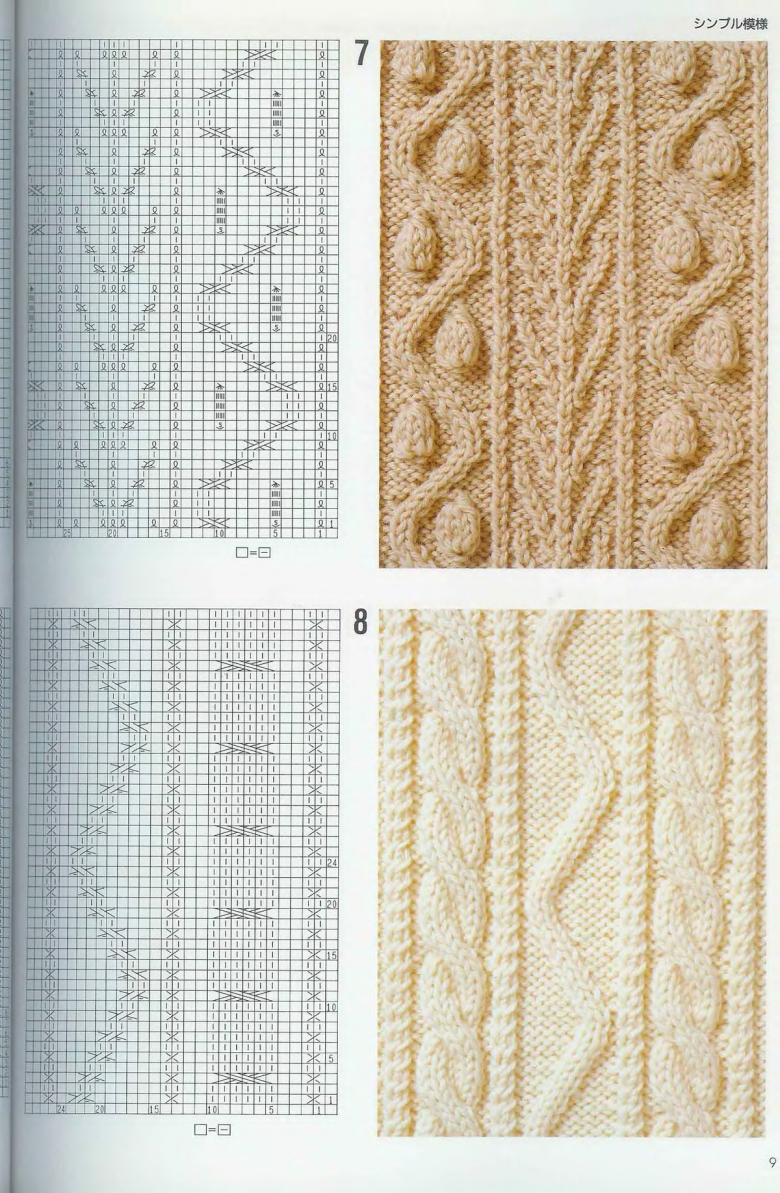
At first, this way of working, with the introduction of another needle, seems very difficult, but very soon this skill becomes accessible and familiar.

To knit looks voluminous and the pattern stands out well, you need to choose a thicker yarn.
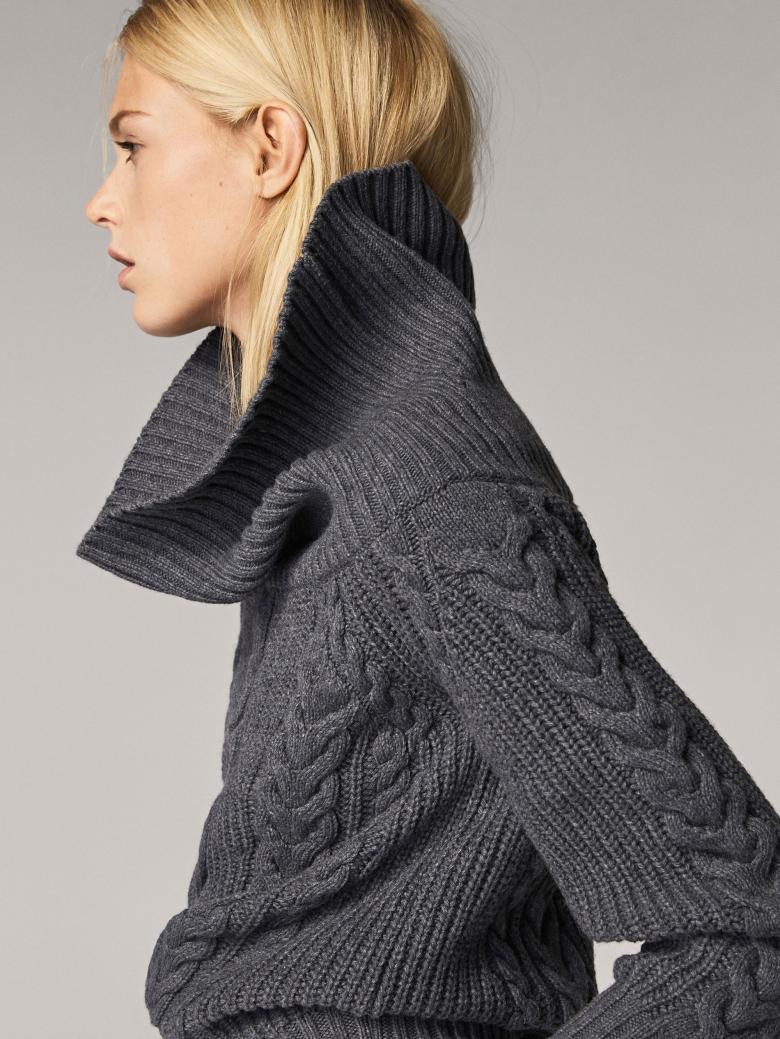
To knit a simple braid, you need to dial, for example, 12 loops. You can take a larger number of loops, but you must keep in mind that when crossing large sections of knitted fabric, the outermost loops are too tight and even form holes, which worsen the quality and appearance of the product. Of the 12 loops in the pattern, the braid itself will take 6.
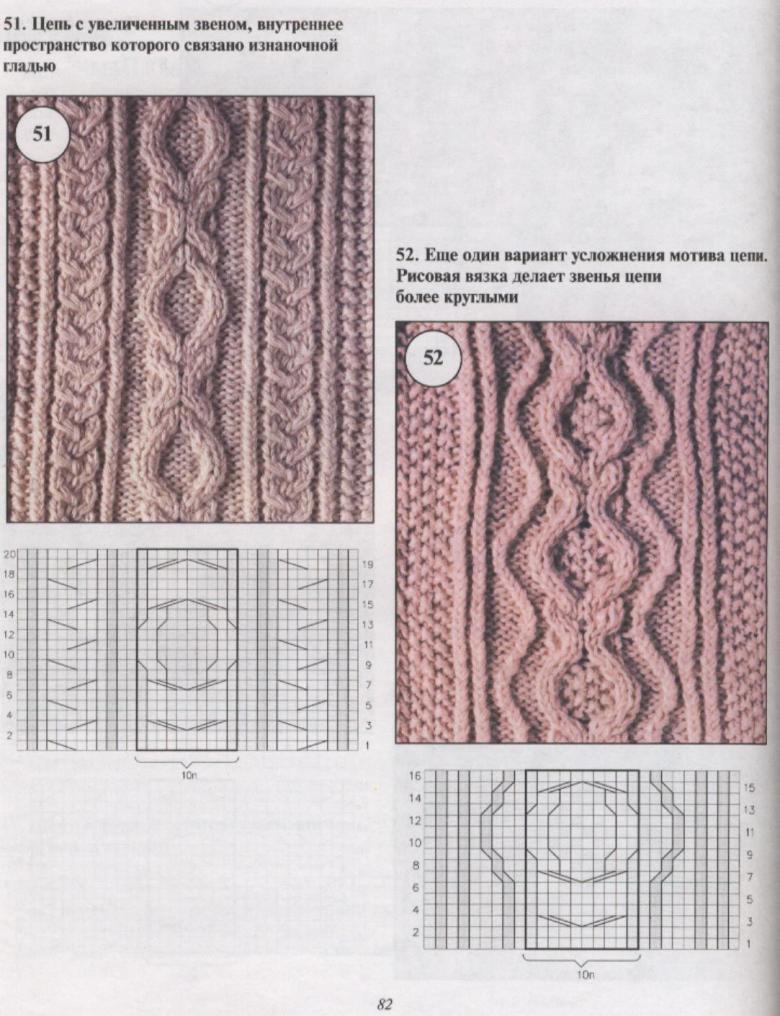
Three stitches each are needed for the crossed strips, and two stitches are needed to form the edges of the fabric. The order of knitting should be as follows:
- in the first row, after removing the crochet stitch, knit 2 wrongs, 6 rights and again 2 wrongs, ending the row with the last crochet stitch;
- Rows 2 through 4 are knit in the pattern formed;
- From the fifth row, the crossing begins, for which you must again knit one edge, two wrongs, and remove three right-handed stitches to an extra needle without having to knit them, and keep them in front while the next three right-handed stitches are knit; then, return the stitches from the extra needle back to the main one and knit again in the pattern, until row 13, in which the crossing is again made as in the fifth row.

Such braids are perfect as a scheme for knitting gaiters by spit, as well as for any sweaters, hats, mittens, other warm things and furnishings. You can make a whole cloth, covered with several such braids or use as a trim. This beautiful knitting looks good on both adults and children.
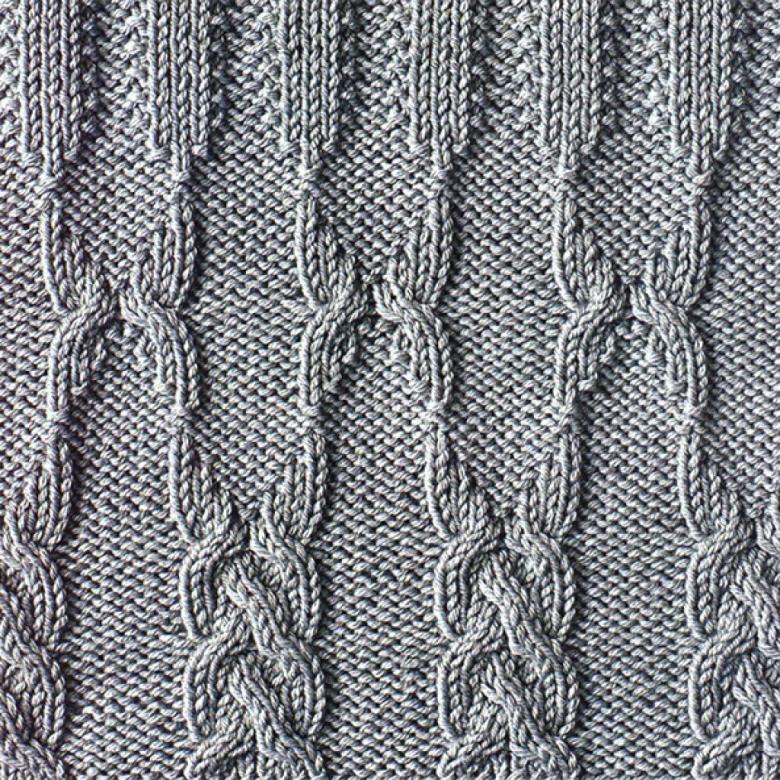
Double braid technique
This type of braids is made of two crosses, alternating in a staggered pattern. This is quite a creative type of pattern, in which any dilution and improvisation is possible. For the pattern, you need to take as many loops so that there are 12 loops left to make double loops. In this case, with the two edges and four on the edges of the pigtail, you get a total of 17 loops. The knitting pattern will be as follows:
- From the 1st to the 3rd row, knit a simple alternation following the pattern of the first row, after the first crochet, knit 3 plies, 9 obverse plies and end again with three plies with the final crochet;
- From row 3 start crossing the braid, in the left-right direction, which involves 6 loops of the 9 right-hand side, taken by 3 to form the pattern;
- In row 7, the crossing of the braid from right to left is made, from the 6 stitches of 9 taken from the other side, where the braid is also formed by swapping sections of 3 stitches each;
- everything is repeated, starting with row 9, similar to row 3.

This more complicated version of the pattern, based on a combination of braids, can make up a braid. Such technically difficult patterns give products a beautiful volume relief, make them unique and stylish.
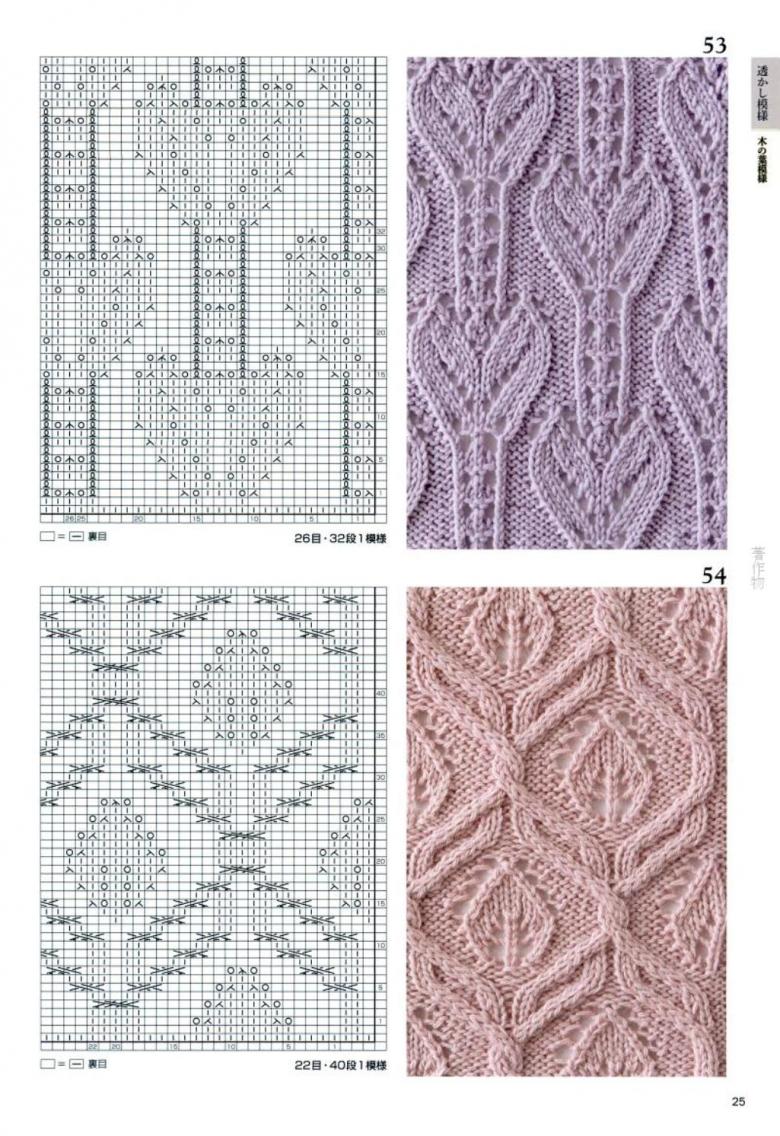
Features of knitting plaits
Knitting technique of harnesses is closer to the weaving of cords or ropes and is performed with knitting needles or crochet. It resembles the compositions that can be found in traditional hairstyles, fabrics and baskets among northern peoples.

So-called arans, are made by crossing from one to several loops on the main plane of the knitted fabric. The description of the easy pattern may include a way to crochet harnesses when, in addition to twisting the loops, they are passed through certain areas of the crochet, in one or more directions.
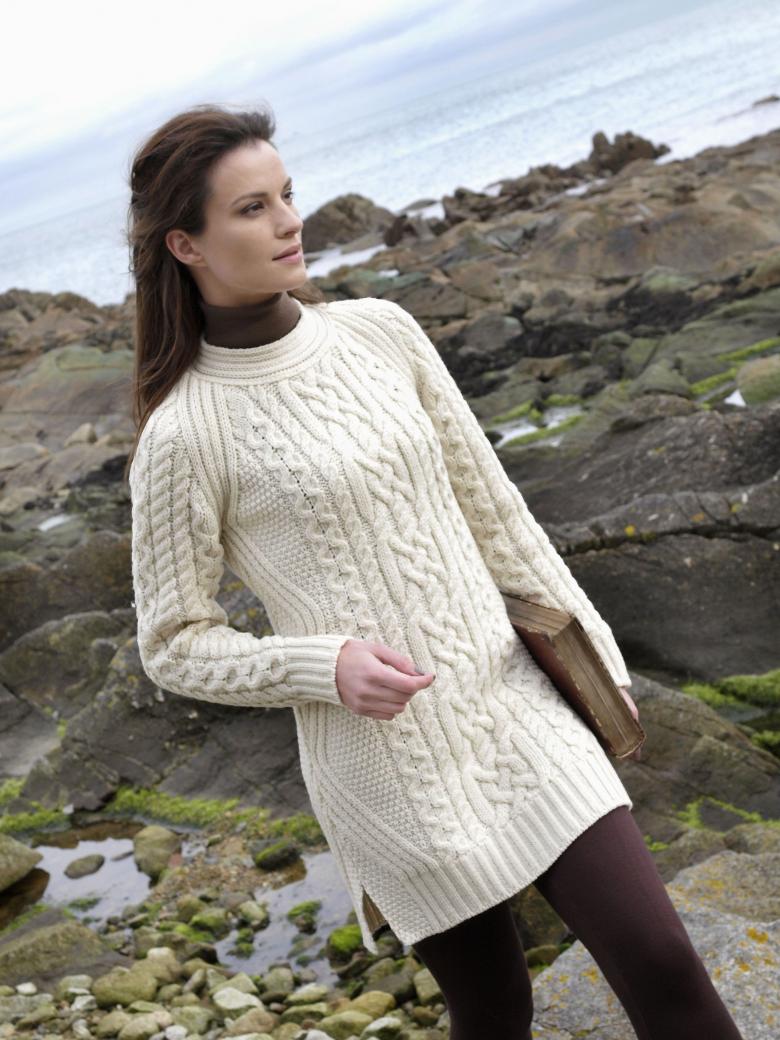
Vertical stripes on products look more convex when they are made from bulk wool or half-wool yarn. To form a simple 4 stitches harness, you have to calculate their number for the whole fabric so that it is divided by 6, except for the two edge stitches.
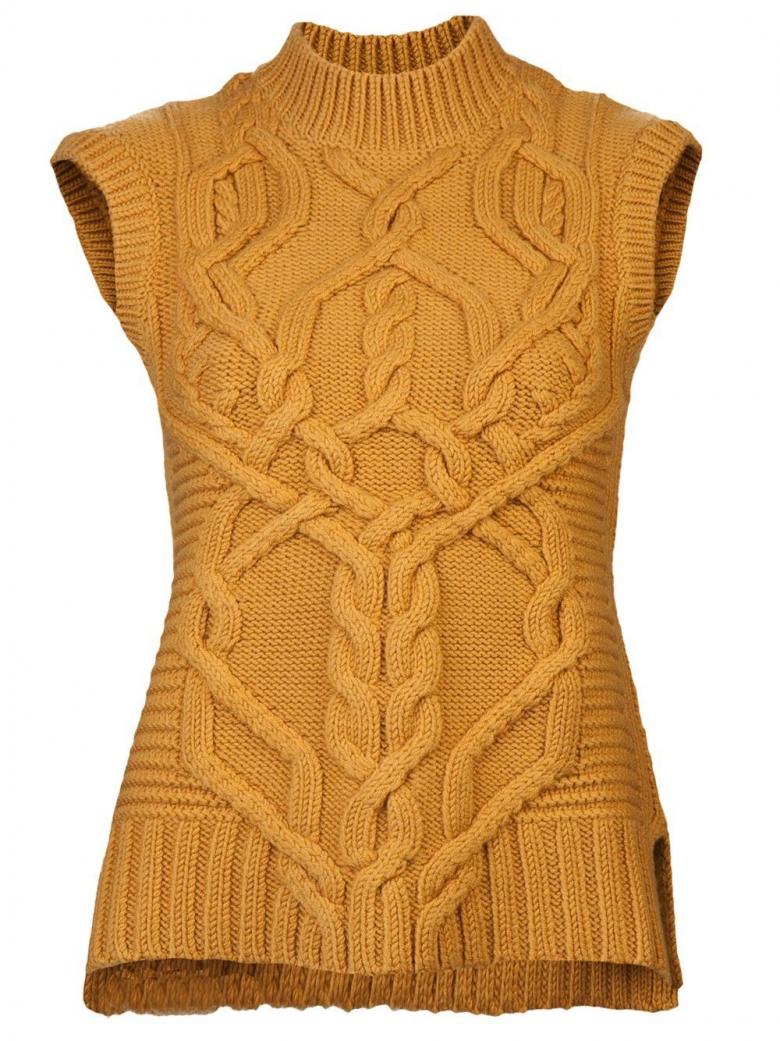
Of the six loops of the rapport, starting from the first row, you have to do 2 wrongs and 4 rights. From the second row and in any even row, cross two loops from left to right and two from right to left, in each of the repeated four.
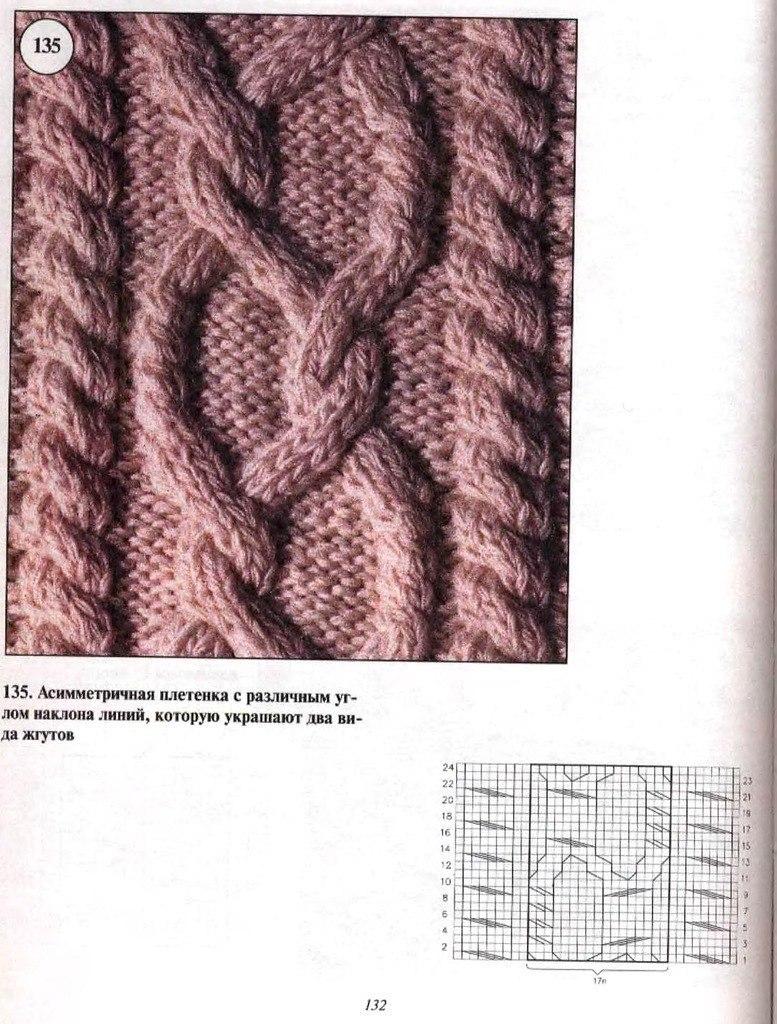
Knitted leggings
Warm and comfortable clothes are very necessary for children and adults for training, sports and dancing in the cold season. Of course, ready-made products are available for sale, but they are no match for gaiters, tied by hand, using the technique of pigtails and harnesses.
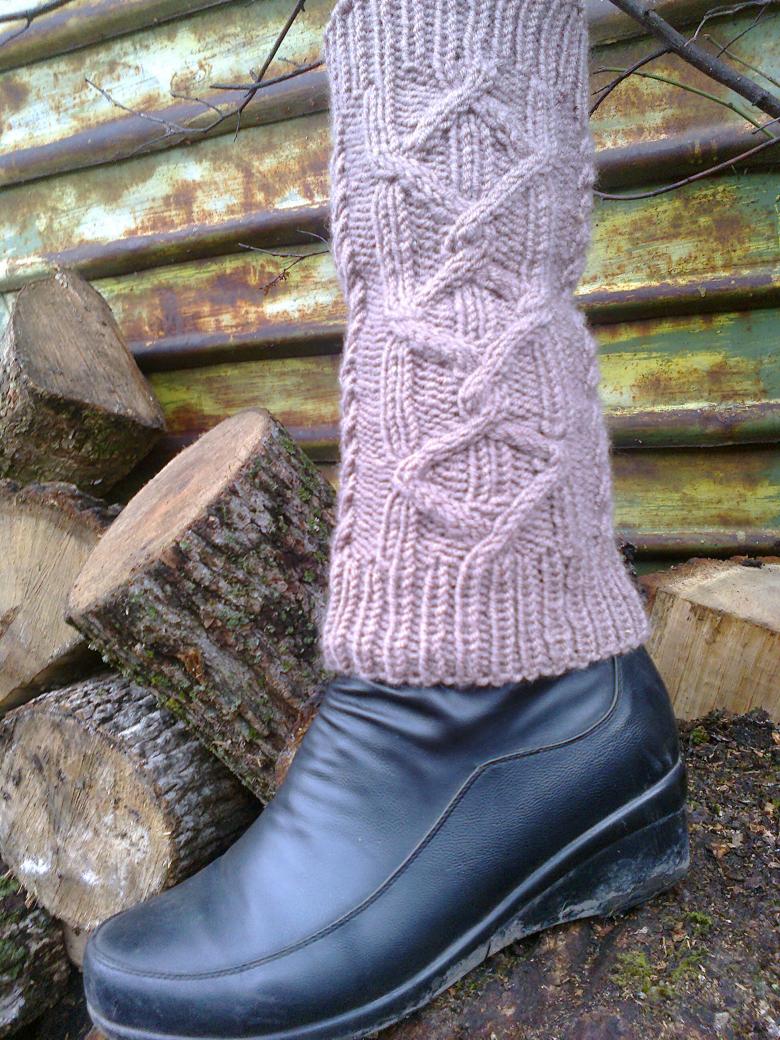
Description of the scheme of knitting gaiters by spit begins with taking a measure, which consists of the volume of the calf, shin and leg at the top of the product, as well as the overall height. On two spokes, such a product can be knitted in the form of a rectangle, which is then sewn.

But there is also a way of knitting in a circle, for which you need 5 spokes and one extra, for the pattern. Even easier to knit gaiters in a circle by crochet. Beginners can, for experience, start with short warm products according to the scheme of knitting gaiters by spit for a girl. Children like such original, warming gaiters, which can be worn over winter boots and half-boots.

